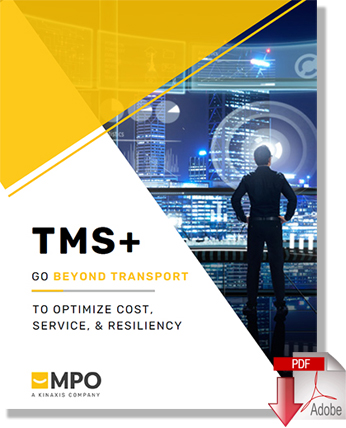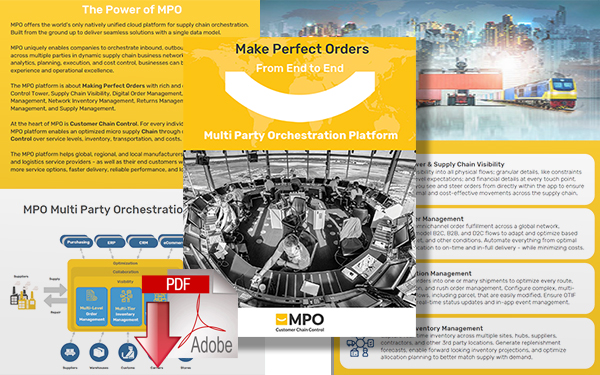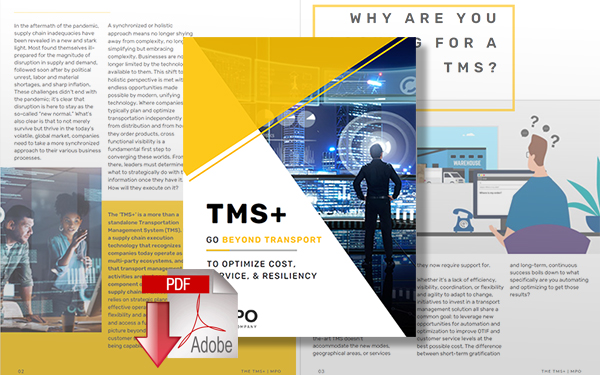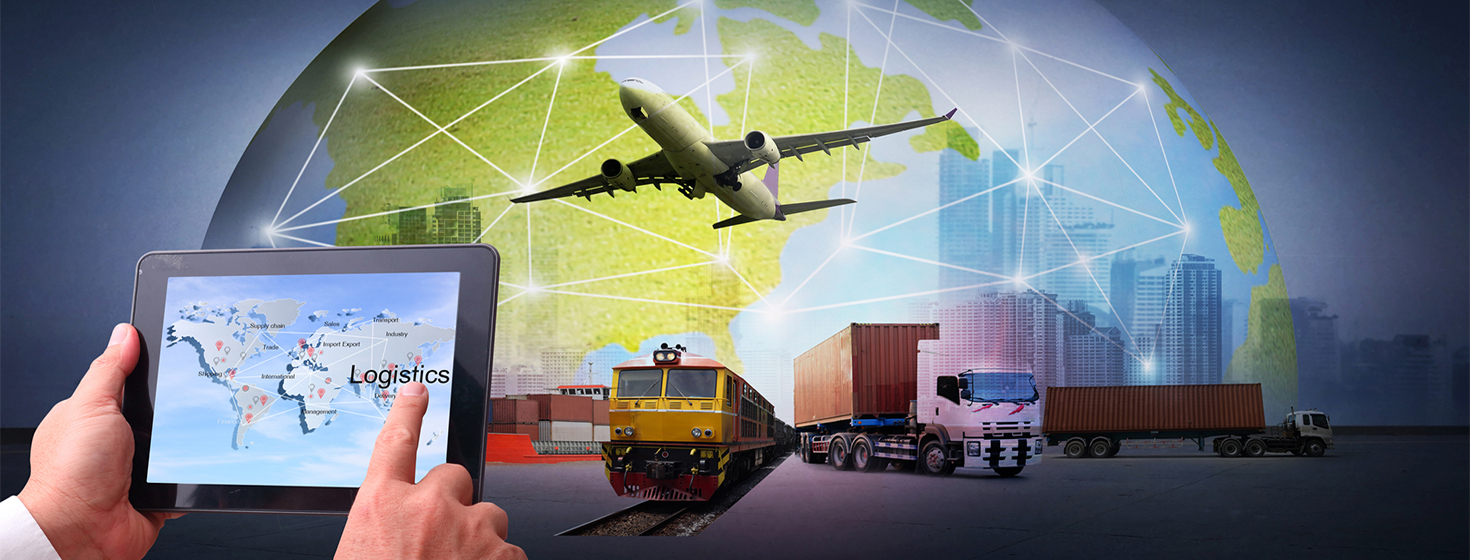5 Tough Love Tips for Choosing the Best TMS Software

Acquiring the best transportation management system for your company’s present and long-term success is doable, but it requires a certain amount of due diligence and change in perspective.
Digital Transformation
Having spent many years in business development and sales, I’ve spoken to many supply chain and logistics executives from a range of industries.
More and more organizations these days see how their competitors are digitally transforming and they don’t want to be left behind.
Everyone wants to be leading their industry, but leading an industry requires taking risks and thinking differently about technology strategy.
I’ve seen businesses make choices that they’ve come to regret. In fact, according to Gartner, 73% of tech purchasers who have bought but have not yet implemented their products/solutions indicated high regret.
Acquiring the best transportation management system for your company’s present and long-term success is doable, but it requires a certain amount of due diligence and change in perspective. Here are the top five strategies that will help you get the TMS selection process right.
5 Tips for Choosing the Best Transportation Management System
1. Create a cross-functional team
When you’re trying to solve critical pain points to improve operations and customer service levels, the stakes are high. Understandably, you want to move fast. But moving fast also means you risk making costly mistakes - like not doing a tech audit to understand your systems landscape and the company’s greater technology strategy.
Build a cross-functional team. The degree of visibility, flexibility and actionability you have in your supply chain impacts all functions and areas of the business. I’ve seen it happen regularly during discovery where teams come to the table looking for a transportation management solution, and then reveal gaps and inefficiencies within order management or omnichannel flows.
Bringing in more people to the conversation can slow a project down. But it’s worth understanding the full complexity your organization is working with to implement a robust and lasting solution. Put it all on the table. It also allows the provider to do a better job of explaining, consulting, and recommending the best possible solution for your specific needs. Once you have the best transportation management system, there are ways to structure implementation for fast time-to-value.
2. Be flexible in your definition of a “top TMS”
Picture it: you’re walking through a trade show. To your left are banners promoting the best Transportation Management System (TMS), and to your right are…more banners claiming to be the TMS that can do it all. No doubt each solution has its strengths and weaknesses, but no two systems are exactly alike. And no matter how advanced and capable a particular transport management system is, it won’t necessarily meet the specific needs of your company. So how do you weed through the noise?
I’ve seen many organizations rely too heavily on analyst quadrants. While these are certainly informative and help narrow the pool, they may also be a bit too limiting. Not only are quadrants a small cross-section of all the available solutions out there, but focusing solely on top players constricts your options even more. You might find yourself buying the wrong solution because you didn't look outside that box.
Analyst Research My advice: Broaden the scope and don’t limit yourself to just one analyst review. Each has its own standards and key differentiators and will therefore expose you to diverse perspectives. Remember also that when it comes to a TMS, most logistics solutions will profess to take care of everything. When you really start looking deeper, you realize there are gaps in the offering. Some TMSs can track an ocean container and get accurate information, some can't. Some TMSs offer integrated parcel management, some don't. Some claim to have a parcel, but it’s not a core component and you find out later that it needs to be bolted on with potential issues in setting up communication between the two systems. Not all transportation management systems are multi-modal or support every mode. If you run an international, multi-modal business then native Omni-modal support should be a priority. I recommend creating a checklist and drafting a list of questions for the vendors to ensure your most critical needs are met.
3. Be thorough and honest in the discovery
The early stages of discovery can be a lot like a first date. People tend to play their cards close to the chest, steering clear of topics like complexity, timeline, or who else is competing. Reasons why vary. Even with an NDA, people prefer to maintain confidentiality or don’t necessarily want to admit how messy things are behind the scenes. Maybe they’ve grown through acquisitions, amassed several ERPs, and don’t have their operational systems and processes under control. The software provider may not be made aware of an unusual approach to GL coding and is left to figure it out based on what's been done in the past.
Much like in dating, there’s also the very real fear that a vendor will drop them because of their complexity – to which, in dating and in software partnering, I would advise: They weren’t right for you. You deserve better, and it’s worth finding someone who will embrace your situation in all its glorious convolution. To go one step further, you should be strategically screening for software providers best able to manage your flavor of complexity – who can truly take on the challenges your situation calls for.
A discovery like a maze
Ultimately, it’s in your best interest to put fears and pride aside and draw back the curtain. Do it as soon as possible, because when the truth comes out during implementation, an otherwise manageable problem becomes a time and budget sink that has you going back to the drawing board to rescope the project. When discussing the timeline and your vision for the solution, is there a compelling event that’s driving the initiative? Do you need the TMS implemented by a certain date? Is the TMS intended for the whole company or just a specific line of business or mode of transportation? From a provider’s perspective, a lack of transparency can make discovery feel like you’re wandering through a maze or haunted house, with surprises popping out along the way. The process is as much about people as it is about software. The more a provider knows, the more they can help, and the more symbiotic the relationship will be.
4. Consider your future needs
Beyond being honest in discovery, companies would do well to tackle complexity head-on in their overall digital transformation strategy. Take omnichannel complexity, for instance. Companies often feel they don’t have time to deal with it; they have bigger fish to fry. But inefficiencies that are pushed aside or feel less immediate don’t go away. They grow bigger and become more unmanageable. By the time you’re ready to handle them, the solution you selected may not be adept at doing so.
Imagine Business FutureRather than continuously accrue and patchwork disparate systems, it's critical for businesses to understand not only where they are today, but where they plan to be in the future. The best solutions are future-proof. The best transportation management system isn't one that’s suitable for this year, but for the next three or even five-plus years. But first, you need to visualize those possible futures.
Think about volume and mode shifts. For omnichannel businesses, consider what geographies you plan to grow and which may shrink. Factors may vary by industry: Logistics service providers might consider service portfolio expansion to attract new clients. For an LSP then, a future-oriented technology strategy would include a highly flexible, configurable, and scalable platform to accommodate diverse flows, such as return flows. Manufacturers, on the other hand, may focus on resiliency and better orchestrating across their service providers. Their future-proof approach would include greater business network support and supply chain visibility across multi-tier suppliers and warehouses.
Whatever your industry, the most successful organizations don’t just “modernize” by upgrading standalone systems but treat digital transformation holistically, with initiatives that promote continuous progress and evolution.
5. Embrace complexity
Many companies are juggling an extraordinary amount of complexity. Diverse product portfolios, order flows, multiple sales channels, multiple service providers, systems, modes, geographic scope – truly, the list goes on and on. And yet, many companies still see TMS as a managed solution or a transport-isolated system. This mindset perpetuates critical gaps in visibility, communication, and activities across supply chain execution. If a transport management system doesn’t cover ocean movements or customs, consolidation at the port, or deconsolidation at the port – when different systems handle different activities and these systems aren't communicating – you risk errors, delays, and cost incursions.
When systems don’t communicate, people don't communicate. Working in silos, you might embrace Complexity and have two separate LTL or parcel shipments heading in the same direction to the same place but miss opportunities to combine them. Similarly, if you’re managing different lines of business using different systems and processes, you’re not taking advantage of every opportunity for optimization, cost-saving, and sustainability.
Consider also landed costs and calculating cost to serve. If you're selling a product, can you track cost from start to finish - from moving raw materials to assembly to getting it to the final customer? You can’t process that type of financial data if you don't have it all on one platform.
There’s also the benefit of the lower total cost of ownership and efficiency when adopting holistic technology. Not having to train people on multiple systems – and not having to retrain once they move on to a different part of the company. Managing fewer external relationships means fewer maintenance schedules and less of a burden coordinating with multiple providers.
To avoid regret, embrace complexity. Rather than focusing too narrowly on transport management functions that solve immediate pain points, also prioritize the degree of customizable options alongside geographic and mode scope which enable scalability and business growth. Prioritize how a solution connects to your greater systems landscape and whether it provides cohesion and end-to-end visibility for more strategic action. If you operate across multiple warehouses, multiple ERPs, and multiple WMSs – use that to your advantage! It means you have greater options to negotiate rates, routes, and service level options to always deliver the best service at the best costs. With technology that embraces complexity, you gain agility and intelligent decision-making. You become future-proof in the sense that your technology accommodates the natural ebbs and flows of your business.
MPO is a Multi-Party Orchestration platform offering TMS+. Recently recognized as a 2022 Transportation Management System Leader, the TMS+ recognizes that supply chain and logistics professionals can no longer treat transport management in isolation. Learn about how you can start leveraging data to automate and optimize across the full order lifecycle by downloading the TMS+ whitepaper below.
You can also get to know the MPO Transportation Management System (TMS+) by browsing the solution page, getting in touch by reaching out to [email protected], [email protected], or requesting a demo today.
About the Author
Will Chang - Will is a seasoned Account Executive for NA and LATAM at MPO. He specializes in technology that drives operational excellence in all geographies and converts complexity and volatility into controlled orchestration.
Related Resources
Multi-Party Orchestration Platform
In this brochure, you'll find a guide to MPO's unified cloud platform for multi-party orchestration, including its rich and flexible solutions: Control Tower, Supply Chain Visibility, Digital Order Management, Transportation Management, Network Inventory Management, Returns Management, Spare Parts Management, and Supply Management. Download Now!
TMS+ Go Beyond Transport to Optimize Cost, Service, & Resiliency
In this paper, we discuss why a holistic, “TMS+” approach is integral to success in the new normal and beyond,e outline how the TMS+ breaks down silos to optimize across inventory, transport, logistics, and order management concurrently, intelligently, and in a timely and relevant manner for cost, service, risk, and sustainability. Download Now!
More Resources from MPO
Read: What to Look For In a Transportation Management System
Article Topics
MPO News & Resources
TMS+ Go Beyond Transport to Optimize Cost, Service, & Resiliency Multi-Party Orchestration Platform When It Comes to Digital Transformation You May Not Be Doing What You Think How Chief Operating Officers are Achieving Results with Supply Chain Software SPARK Matrix Transportation Management System Software Analyst Report Top Trends Driving Change and Technology Strategy Within Logistics & Transportation Management 5 Key Steps for Optimizing your Last Mile Delivery More MPOLatest in Transportation
The Two Most Important Factors in Last-Mile Delivery Most Companies Unprepared For Supply Chain Emergency Baltimore Bridge Collapse: Impact on Freight Navigating Amazon Logistics’ Growth Shakes Up Shipping Industry in 2023 Nissan Channels Tesla With Its Latest Manufacturing Process Why are Diesel Prices Climbing Back Over $4 a Gallon? Luxury Car Brands in Limbo After Chinese Company Violates Labor Laws More Transportation

















